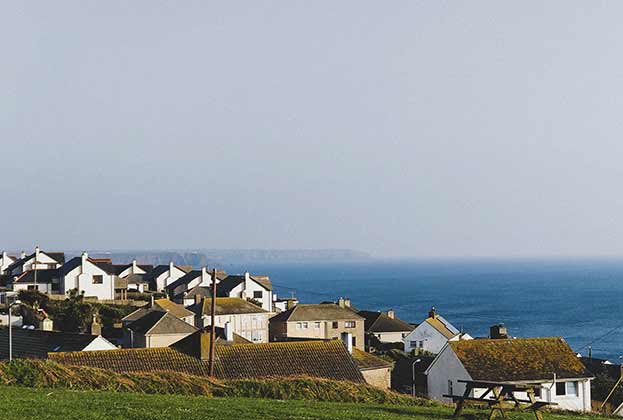Sustainability and leisure provide opportunities to diversify
Farming is deep in the roots of the South West, but with mounting expectations that farmland can assist in combating climate change and nature recovery, the demand and interest in farmland has accelerated. These new factors are introducing further competition to an existing strong amenity and commercial farmland market.
A quarter of England’s agricultural holdings are located in the South West of England and agriculture is synonymous with the region’s distinctive landscapes. Reflecting changing priorities for the use of land, the natural environment will become a significant market driver, along with the existing but still growing opportunities for farm diversifications in the South West, particularly into the tourism and leisure sector.
Supply and Demand
The supply of farmland onto the market has slowly begun to recover this year as the economic uncertainty of Brexit and Covid-19 fades. During the first ten months of 2022, the total number of acres publicly marketed across Great Britain increased by 12% when compared to the same period in 2021. However, in the South West region, 16,850 acres of farmland were publicly marketed, an increase of just 1% on 2021. Compared to the last period of relatively normal market conditions prior to the Brexit referendum, the market in the South West is currently still around 24% smaller.
Looking forwards there is a possibility the lump sum exit scheme may contribute to a rise in supply in spring 2023 as farmers seek to transfer their land ahead of the May 2024 deadline. This being said, we anticipate the impact to be fairly small with the majority of retirees meeting the scheme rules by surrendering rented land to their landlord or if owned, transferring it to their successors, or renting it out under a Farm Business Tenancy (FBT).
Values
The continued constrained supply has impacted the market, with a growing pool of buyers frustrated by the lack of opportunity, with the average value for ‘all land types’ across the South West strengthening by 3.3% in Q3 to £8,100 per acre (see chart, below). The average value for prime arable and grade 3 pasture are now £9,700 and £7,500 respectively.
Lifestyle and environmental demands are driving the market. Pasture land is appreciating fastest of all land grades, with poorer quality land, used for BNG or offsetting, increasing by 12 per cent across the South West in the first nine months of 2022. By comparison, prime arable has grown by 6 per cent in the same period.
Historically, economic uncertainty has resulted in both the retention of land. With the Bank of England predicting a recession, we are likely to see supply levels remaining low for the foreseeable future. The demand for land remains such that we will continue to see a supply and demand imbalance that will in turn continue to drive values, despite rising interest rates.
Nitrogen and phosphorus are key nutrients for crop production, but are also produced from human waste. River catchments only have capacity to handle a given amount of nutrients (from humans and farming) before the balance of the ecosystem is negatively affected.
The concept of 'nutrient neutrality' arose in late 2018 concerning the interpretation of the Habitats Directive, following a Dutch case on water quality. Following this case, Natural England issued guidance preventing residential development surrounding the Solent, where river conditions were “unfavourable”, unless the local planning authority (LPA) was certain the impact of the nutrients from the wastewater created on-site could be mitigated. This guidance has since expanded to 75 local planning authorities across England.
It is important to note that the rules only impact vulnerable catchments within these LPAs, of which large areas surrounding Yeovil, Taunton and Salisbury are all impacted. Any new development in catchments which consists of overnight accommodation must demonstrate that it is nutrient-neutral in order to receive planning permission. This effectively creates a moratorium on all new development that would discharge into a protected water system.
Providing 'nutrient credits' could present income opportunities for landowners in the catchment areas. Mitigation techniques are subject to negotiations with each LPA, however, there are currently three primary land-based off-setting solutions under consideration:
- Upgrading septic tanks
- Land use change
- Integrated constructed wetlands (ICW)
Mandatory BNG will mean that all developments must achieve at least 10 per cent net gain in biodiversity levels compared to their pre-development value. This will come into effect for new planning applications from November 2023. Biodiversity uplift can be achieved through habitat creation or enhancement onsite and/or offsite, or through the purchase of statutory biodiversity credits from the government. The provision of offsite biodiversity units offers an opportunity for rural landowners to monetise habitat creation, however, landowners should consider the business case carefully due to the minimum 30-year term for the habitat provision.
Across the South West, the idea of making the best use of a farm’s resources to enhance income from sources other than conventional farm production is not a new phenomenon, with many farms diversifying to create tourism and other new enterprises. It is an opportunity that continues to grow and farm businesses across the South West are well-placed to take advantage of the growing consumer interest in wellness, environment and experiences.
Read the articles within Spotlight: The South West Peninsula below.
.jpg)
